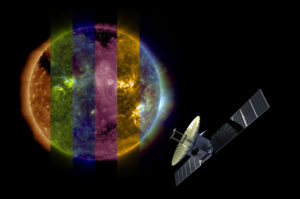by — June 17, 2020
Credit: Xplore
NOAA awarded a contract May 27 appreciated at $670,112 for a study to assess the feasibility of sending a commercial assignment to give early detection of solar events endangering telecommunications businesses and the power grid to Xplore.
To date, only authorities spacecraft have flown to L1, including NASA Advanced Composition Explorer the NOAA Deep Space Climate Observatory and NASA-European Space Agency Solar and Heliophysics Observatory.
“We’re investigating the way the industrial capacity to carry these devices to L1 to a little satellite and supply the data will be more cost-effective,” Lisa Rich, Xplore creator and chief operating officer, told SpaceNews.
Xplore suggests hosting NOAA solar detectors on Xcraft, the company spacecraft. ESPA is a secondary payload adapter.
“Space weather observation has been a government-led activity for the previous 50 decades, but this is an area where innovative companies can play a key function. I’m looking forward to another generation of advanced space weather abilities coming from this venture with Xplore.”
The NOAA award is the latest in a series of wins. Xplore, a firm based in 2017, declared in April a U.S. Air Force Small Business Innovation Research contract and a part in a futuristic NASA mission. Underneath the Air Force contract, Xplore is currently studying how to set a placement, navigation and timing system for cislunar space.
Xplore also is a member of a group that won a $2 million NASA Sophisticated Advanced Concepts award for the exoplanet assignment named Solar Gravity Lens Focus (SGLF). Underneath the award declared in Aprilthe NASA Jet Propulsion Laboratory, Aerospace Corp. and Xplore suggest sending little spacecraft 80 billion km from Earth,”in which the Sun’s gravity behaves as a magnifying lens to the desktop sky,” according to Xplore’s April 28 news release.
Much like the NOAA study, the cislunar architecture and SGLF mission would be built around Xcraft, a modular satellite built to function”in almost any environment from Earth orbit to the Moon, Mars, Venus and Lagrange factors,” Rich explained. “In our view, frequent low-cost missions to space need the industry to evolve beyond conventional classic spacecraft.”
NOAA is currently issuing a string of study contracts to explore spacecraft prospective tools, industry versions and mission concepts to its architecture to triumph Geostationary Operational Environmental Satellite R series and that the Joint Polar Satellite System.
– Advertisement –
